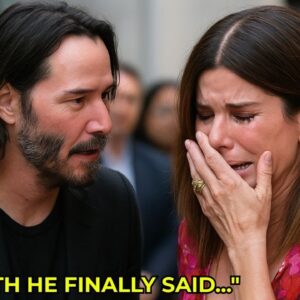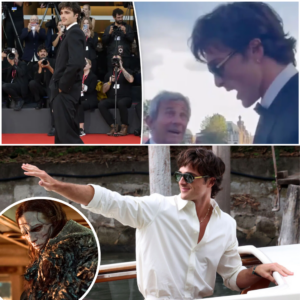How creators Craig Mazin and Neil Druckmann evolved and even improved upon the source material to make a more effective television series

‘The Last of Us’ video game vs. HBO show.Sony, 2; Liane Hentscher/HBO, 2
After years in development, there were many who doubted the necessity of an adaptation for the modern PlayStation classic The Last of Us. Already considered one of the most cinematic games ever produced, what more could it possibly bring to the table as a television show, or worse, what would it have to sacrifice to get made?
By all accounts, the fears were proven wrong. The show premiered to critical acclaim, the second highest performing new series premiere for HBO in a decade. And it’s only getting more popular by the week. For fans, it’s not just a huge sigh of relief, but a testament to the labor of love provided here by creator Craig Mazin in conjunction with series co-creator and shepherd, Neil Druckmann. Their outstanding commitment to the veracity of the source material has lead to an experience that’s deeply satisfying to both gamers and casual audiences alike.
But not everything’s the same. As we now cross the first third of the season, it’s clear that some of the most magical experiences are actually seeing where the show pivots from the game and, somehow, often improves on it. Let’s take a look at the biggest changes from the first few episodes.

An infected person in HBO’s ‘The Last of Us.’Liane Hentscher/HBO
Tendrils Not Spores
If there’s anything viewers know about zombies, it’s that being one bites. In both versions of the world in The Last of Us, a human can be become infected by vicious bites and scratches from cordyceps-ridden individuals (assuming they’re not ripped apart entirely), but one of the persistent threats in the video game doesn’t make the jump to HBO: fungal spores. From the onset of the game, players are tasked with creeping through densely clouded areas filled with airborne cordyceps spores which act as the primary means of infection for humans on top of more traditional bites. For a game, it makes sense. It creates scenarios where players are forced to take things slow as visibility narrows and sets up some of the series’ most horrific encounters.
So why the change? Well, one of the biggest issues with game adaptations is taking iconography and adapting it into a more cinematic language for viewing (rather than playing). In-game, characters (sans Ellie) put on respirator masks at each spore encounter, but their faces aren’t any more obscured, given that the viewpoint is already over-the-shoulder during third-person gameplay. But in a television show, even transparent masks can impact a character’s expression and an actor’s ability to convey emotion. The irony, of course, is that series star Pedro Pascal has already made a name for himself as a beloved character donning a mask full-time with The Mandalorian, but why pigeonhole the man when he’s one of the most dynamic performers in the show? So, just like that, asbestos-esque clouds are no more, instead replaced primarily by sentient spaghetti-like fungal tendrils that protrude from the mouths of infected hosts and provide some of the most haunting imagery in Episode Two.

Grossness in HBO’s ‘The Last of Us.’Liane Hentscher/HBO
Fungal Minds Think Alike
Alongside the changes in transmission, the next major change to the cordyceps threat is in how it actually roots into its hosts and the world. Surprisingly, while many expected the origin of the outbreak to remain a mystery, Episode Two lays it out. Fungal cells made their way into globally distributed foodstuffs like flour and sugar, rapidly taking over the planet in a single weekend of humanity’s carb-loading. Global interconnectedness is what allowed the outbreak to spread, and it’s what allows it to thrive as well.
In the game, there’s no indication that the cordyceps fungi share an overall consciousness, but, as shown in a scene overlooking a derelict street bathed in sun, they have something akin to a hive mind – reacting to stimuli as a swarm. Additionally, there’s now a network of mycelium that burrows throughout human hosts (it can be seen in the Jakarta intro as the cadaver’s skin gives way to furry, mold-like fuzz), as well as throughout the earth. One wrong step onto mycelium root can alert infected for miles, creating an ever-looming sense of dread that (thankfully) didn’t even exist in the game, although Druckmann himself now wishes it did. Speaking on the show’s official podcast, he said, “That’s one of his ideas that, in his research, Craig came up with that I was like, ‘Wait, that would make for good gameplay.’”
But don’t fret about any cheesy deus ex machina “kill the leader, kill them all” twist. Based on everything we know about the game and the show’s commitment to it, there won’t be any easy answers to save humanity in a tropey final act.

FEDRA in HBO’s ‘The Last of Us.’Shane Harvey/HBO
The Faces of FEDRA and Friends
The greatest strength of the television format over gaming is the inherent ability to shift perspective. Not bound to interactivity, the show’s creators are now able to nimbly maneuver from Joel and Ellie’s perspective to other characters, who previously were beholden to their interactions with the protagonists and the player’s POV.
In the show, this allows for multiple characters to be introduced or humanized in surprising ways —beginning with FEDRA, who plays a more passive role in the game. Much like the cordyceps, they’re a persistent threat and deadly foil within the various Quarantine Zones, but much of their horrors are portrayed through somber exploration of abandoned military zones and tragic journal entries strewn throughout the landscape. The premiere introduces a FEDRA guard named Lee who regularly buys pills from smuggler Joel and issues him an ominous warning before ultimately meeting a grim end in a pivotal scene. It’s a bit part, but it shows the toll that this world has even on its Gestapo-like foot soldiers, as Lee is just another broken person, coping with day-to-day existence on the brink. This is a stark change from the game, which never humanizes even a single member of FEDRA, although it spends much more time on their opposition, the Fireflies.
The show continues this trend moving forward with peeks behind the veil at local militia-cum-raiders in Episode Four, as teased in the show’s teaser trailer featuring cast member Melanie Lynskey. There’s also one massive change in Episode Three, but we’ll get to that.
The key value of all this beyond just great storytelling — especially for gamers — is knowing that much of this is training viewers to see alternative perspectives beyond Ellie and Joel’s. It’s a world of gray morality, and spoilers aside, shifting the audience’s empathy and perspective will be key for the show’s future.

Pedro Pascal as Joel in HBO’s ‘The Last of Us.’Liane Hentscher/HBO
Softening the Edges
Despite its numerous moments of somber beauty, The Last of Us games are famously harrowing experiences. The experience can be unflinching, as viewers saw with the series premiere. No one is safe, and to their credit, the creators don’t shy away from this. Instead, they’ve taken several small liberties to effectively soften the edges of some of the characters in ways that avoid misery porn and relish in the more poignant moments.
Beginning with Joel. It’s made known up front that he is a bad man or, at the least, a man who is capable of Very Bad Things. One act of violence aside, it’s mostly conveyed via dialogue and his relationship with his partner Tess, which is more tender and overtly romantic than in the game. Speaking of Tess, she too is shown in a softer light. Although clearly capable of killing, she still operates thoughtfully — deciding the terms under which she’ll unleash Joel on Robert. In the game, she’s the author of Robert’s fate with a dispassionate gunshot to the head after a prolonged foot chase.
In fact, by the time Joel and Tess reach the outskirts of Boston, they will have killed upward of a baker’s dozen people and infected by hand, brick, shiv or pistol, all under the player’s direction. It’s an unfortunate truth that gamers are desensitized to this kind of violence — they actually expect it — and what works for that medium may not work for television. On Sunday night at nine, it would make Joel feel like a serial killer rather than a man who’s lost his way.
Lastly, but repeatedly touched upon, is Joel’s desperate quest to find his brother Tommy. In the game, the two are years estranged — and not amicably; in the show, they’ve lost communication for seven weeks. His primary motivator is to get a car battery from Robert (originally a cache of munitions in the game) and travel to Wyoming to find him. Ellie is cargo along for the ride to Tommy’s, whereas in the game, Joel would’ve never left the QZ until she dropped in his lap. But speaking of that battery…

Bill (Nick Offerman) and Frank (Murray Bartlett) in HBO’s ‘The Last of Us.’Liane Hentscher/HBO
Welcome to Bill’s Town
The starkest revision to the story of the game arrives in Episode Three, “Long, Long Time.” One of the most beautifully realized episodes of television in recent years, it focuses primarily on the years-long romance between cantankerous survivalist Bill (Nick Offerman) and his warmer partner, Frank (Murray Bartlett). Nobody could’ve expected that HBO would slot a 75-minute indie romance into the first act of a zombie survival show, yet here we are, and the results are magnificent.
Right out the gate, there’s some major differences in that, well, Frank’s alive. At least for a bit. In the game, players only interact with Bill, whose obnoxious bitterness is turned up to 11 from the moment he bursts on the scene beheading Clickers with a machete. From there, he becomes an NPC escort character throughout multiple chapters as Joel calls in a favor to locate a car battery to get to Tommy’s. Shenanigans ensue — quite literally, as the majority of his screen time is spent antagonizing Joel and verbally sparring with Ellie, who instantly hates him. Ever the survivalist, Bill advises Joel to cut her loose, because attachments are the only thing in this world that will kill you quicker than Clickers. This comes to pass as players eventually stumble upon the corpse of Frank — up until this point only mentioned with disdain by Bill as a dreamer — who’s hanged himself. His suicide note belies the romantic relationship between the two, which only becomes clear if players opt to hand Bill the note and see him visibly choke up before stifling his tears.
Released in 2013, the game felt progressive for even implying the existence of a gay couple, especially one that didn’t fit obvious stereotypes. Despite this, it still played into the regressive “bury your gays” trope of cruelly killing off queer characters to add window dressing to the world. Even though the show’s version of Bill and Frank still ends in suicide, its depiction of a happy and healthy queer romance that spans over fifteen years is a quantum leap ahead of the game’s. It’s no breakthrough to simply depict queerness on TV, but for a show that many were expecting to be as shallow as “a video game,” the dedication to human stories is admirable. Queerness is an integral part of The Last of Us (the game) and it’s the thematically honest move to lean into it for the show.
Coming from what may be the new gold standard for video game adaptations, it’s essential for The Last of Us to show audiences that there are diverse and meaningful stories to come from the world of gaming.
For more coverage of HBO’s The Last of Us, follow our weekly series recaps. For all things gaming, tune into our Twitch channel for daily news, developer interviews and playthroughs. Join our Discord to continue the chat 24/7.



